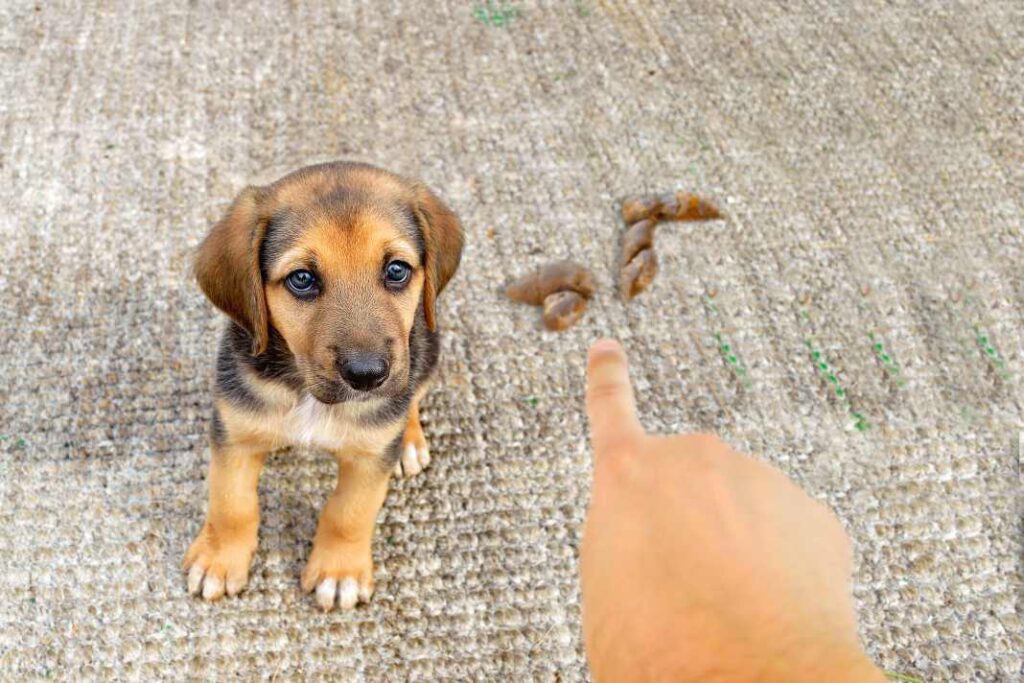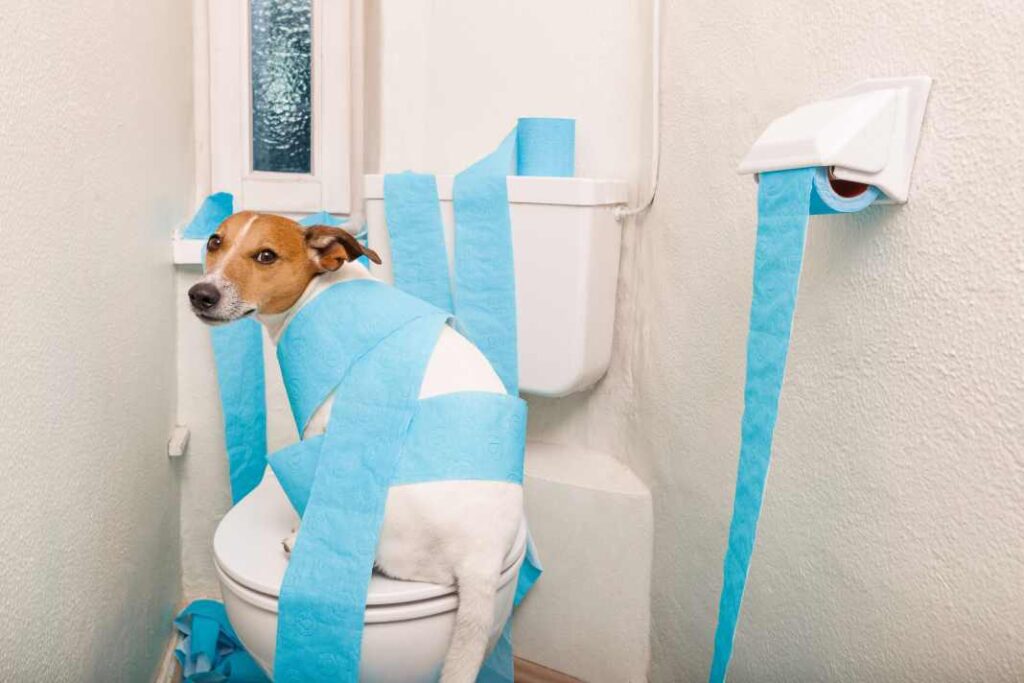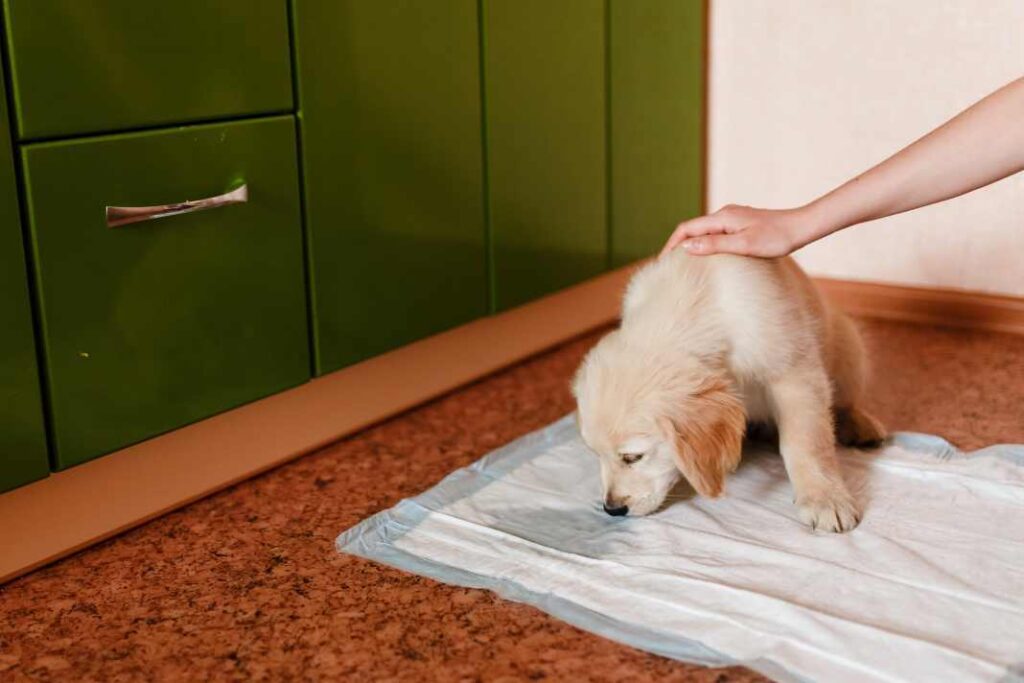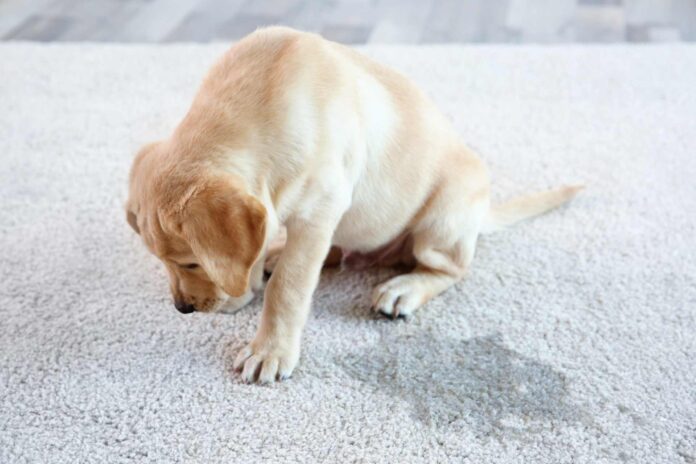I don’t know about you, but I find that toilet training a puppy to be one of the most frustrating and yet rewarding experiences raising a puppy – in equal quantity.
On the upside, you only need to do it once per dog (mostly), and if done right, it can create a good foundation for training them to do anything else they need to learn. Not to mention the bonding experience.
This article provides essential tips and strategies for successfully toilet training a puppy, including addressing common challenges, establishing a routine, crate training strategies, dealing with accidents, and using positive reinforcement techniques.
Introduction to Toilet Training a Puppy Successful

Importance of Proper Training
Embarking on toilet training a puppy is a fundamental aspect of pet ownership that lays the groundwork for a well-behaved and healthy canine companion. Achieving success in this area requires more than just persistence; it necessitates a consistent approach that reinforces positive behaviors while minimizing the chances of future setbacks.
By establishing a structured routine early on, you set clear expectations for your puppy, which is crucial for their understanding and compliance.
For instance, a puppy that learns to associate going outside with toilet time through repeated and consistent cues will likely develop this positive habit more quickly.
Understanding and responding to a puppy’s physical and behavioral cues are pivotal in the toilet training process. Each puppy may exhibit unique signals when they need to relieve themselves, such as whining, pacing, or circling.
Consistent routine and recognizing cues are key to successful puppy toilet training, fostering a strong bond.
Early recognition and prompt response to these signs can significantly enhance the effectiveness of your training efforts. For example, a puppy that begins to sniff around more actively or shows restlessness could be indicating that it’s time for a potty break.
By tuning into these cues, owners can prevent accidents before they happen and guide their puppies toward the desired toilet training outcomes.
This attentive approach not only fosters a stronger bond between pet and owner but also streamlines the toilet training process, making it less stressful for both parties involved.
Common Puppy Toilet Training Problems
Addressing Challenges Effectively
One of the primary obstacles faced during toilet training a puppy is managing the puppy’s schedule, especially when they’re left alone for extended periods. This situation can cause undue stress for the puppy and result in accidents indoors, undermining the consistency of the training process.
For example, a puppy that is accustomed to going outside every hour but is suddenly left alone for several hours may not have the bladder control to wait, leading to an unavoidable accident.
This incident not only causes a setback in the training efforts but also could make the puppy anxious about holding it in the future. For solutions to common puppy potty training problems, visit the link.
Another significant challenge is accurately interpreting a puppy’s cues that indicate they need to go outside. Many new pet owners might not yet recognize signs such as whining, circling, or pacing as the puppy’s attempt to communicate its needs.
Manage puppy’s schedule to prevent stress and accidents; recognize cues to go outside for effective training.
Missing these cues can result in accidents inside the house, which, if not addressed promptly with the right cleaning methods to eliminate odors, can encourage repeat behavior in the same spot.
Additionally, external factors like adverse weather conditions can further complicate toilet training.
Puppies, particularly small breeds or those with thin coats, may be hesitant to go outside in cold or wet weather, making it essential to provide them with a comfortable and accessible bathroom spot under all conditions.
Understanding and adapting to these challenges with patience and consistency is key to overcoming them and achieving successful toilet training a puppy.

Essential Tips for Housebreaking a Puppy
Establishing a Routine
A consistent routine is the cornerstone of successful housebreaking for any puppy. Establishing set feeding times not only aids in creating a predictable potty schedule but also helps in managing your puppy’s digestive health.
This predictability enables you to anticipate when your puppy will need to go outside, thus minimizing accidents indoors. Introducing and consistently using verbal cues such as “go potty” every time you take your puppy out for a bathroom break is crucial.
This repetition helps your puppy make the connection between the command and the action, reinforcing the desired behavior.
For instance, implementing a routine where you take your puppy outside immediately after meals can significantly reduce the likelihood of indoor accidents.
Puppies typically need to relieve themselves within 5 to 30 minutes after eating, highlighting the importance of timely outdoor trips post-feeding.
Establish set feeding times and use verbal cues for a predictable potty schedule and fewer accidents.
Moreover, the period immediately following playtime is another critical window when your puppy is likely to need a bathroom break. Vigilant supervision during these times is key to preventing accidents and ensuring your puppy is given ample opportunity to relieve themselves outdoors.
An effective strategy might include taking your puppy out for a potty break after each play session, reinforcing the habit of going outside to do their business.
This not only aids in establishing a solid potty routine but also helps your puppy understand that playtime and potty breaks are part of their daily schedule.
By adhering to a consistent routine and utilizing clear, consistent verbal cues, you set the stage for a smoother housebreaking process, ultimately leading to a well-trained companion.
Crate Training Strategies

Creating a Safe Space
Creating a sense of security and comfort within the crate for your puppy is crucial for successful crate training. The goal is to have your puppy view the crate as their own personal haven, where they can retreat and relax, rather than a place they associate with punishment or isolation.
To achieve this, start by introducing them to the crate with positive experiences. Place their favorite toys or a comfortable blanket inside to make it more inviting. Begin with short intervals of time, around 10 to 15 minutes, gradually increasing as your puppy becomes more comfortable and shows no signs of stress or anxiety.
This gradual acclimation helps them understand that the crate is a safe spot for relaxation and not a space where they are sent for misbehaving.
Introduce crate with positive experiences; use for security, not punishment, to foster comfort and safety.
Moreover, it’s essential to ensure that the crate is used appropriately. While it’s a valuable tool for helping your puppy learn to be alone for short periods and aids in preventing accidents when you can’t supervise directly, it’s not a solution for deep-seated behavioral issues.
Instead, think of the crate as your puppy’s bedroom—a place where they can feel secure and at ease. For example, feeding your puppy their meals inside the crate or offering treats when they enter voluntarily can reinforce positive associations with the space.
Remember, the key to successful crate training is patience and consistency, ensuring that the crate remains a positive and comforting environment for your puppy at all times.
Dealing with Accidents
Effective Cleanup and Correction Techniques
Accidents are a natural part of the process of toilet training a puppy, but how you handle these mishaps can significantly influence your puppy’s learning curve.
Utilizing enzymatic cleaners is crucial for effective cleanup, as these products not only remove stains but also neutralize odors that might entice your puppy to revisit the scene of the accident for a repeat performance.
This step ensures that your home remains fresh and doesn’t inadvertently encourage repeat offenses in the same locations.
If you happen to catch your puppy in the midst of an accident, this is an opportune moment for gentle correction and learning. Instead of scolding, swiftly guide your puppy to their designated potty area, reinforcing the correct location for these activities.
Use enzymatic cleaners for accidents and gently redirect to teach puppies proper potty habits.
This method of redirection, rather than punishment, fosters a positive learning environment and helps your puppy associate the act of elimination with the appropriate outdoor space.
Consistency in response to accidents, coupled with patience and understanding, plays a pivotal role in helping your puppy grasp the expectations of toilet training.
Through these thoughtful and responsive techniques, you’re building a foundation of trust and clear communication with your puppy, essential components for successful training outcomes.
Positive Reinforcement Techniques

Encouraging Good Habits
Positive reinforcement stands at the heart of effective toilet training a puppy, acting as a powerful tool to encourage and solidify good potty habits. The principle is straightforward: reward the behavior you want to see more of.
For instance, the moment your puppy successfully eliminates outside, shower them with verbal praise and offer them a treat. This immediate positive feedback helps your puppy associate the act of going potty outside with pleasant outcomes, reinforcing the behavior.
An example of this technique in action could be saying “Good job!” in an enthusiastic tone and giving your puppy their favorite treat right after they’ve done their business outside.
Moreover, rewards don’t always have to be treats. Diversifying rewards can make the training process even more effective. For example, after a successful potty break, engaging in a brief play session or going on a short walk can serve as a fun and motivating reward for your puppy.
Reward good potty habits with treats, praise, or play to reinforce positive behavior in puppies.
This variety not only keeps your puppy interested but also helps them understand that good behaviors lead to enjoyable activities, further reinforcing the desired behavior.
It’s crucial to remember that positive reinforcement is about building trust and confidence. Resorting to punishment or negative reinforcement for accidents or mistakes can have the opposite effect, instilling fear and confusion in your puppy.
Such tactics can severely hinder their learning progress and damage the bond between you and your puppy. Instead, focus on patience, consistency, and positive reinforcement to guide your puppy through their toilet training journey successfully.
Night-Time Training and Apartment Challenges

Special Considerations for Success
Toilet training a puppy, especially in an apartment setting or during the night, requires a thoughtful approach tailored to these unique environments. At night, puppies have less control over their bladder, making it essential to adjust their water intake accordingly.
Limiting access to water a few hours before bedtime can significantly reduce the likelihood of accidents occurring during the night.
This tactic, coupled with a consistent bedtime routine that includes a final potty break, sets a clear expectation for your puppy and helps them understand that nighttime is for sleeping, not for potty breaks.
Adjust water before bed and maintain routines for successful night and apartment puppy training.
For those living in apartments, the challenge of quickly and easily accessing an appropriate potty area can be daunting.
Establishing a strong routine is key; take your puppy to the same designated potty area every time to build a strong association between the location and the act of going to the bathroom.
In situations where getting outside takes extra time, such as in high-rise buildings, training your puppy to use puppy pads or a balcony potty area as an interim solution can be helpful.
However, transitioning to outdoor potty breaks as soon as possible is important for long-term success. Above all, consistency is your greatest ally in apartment training, ensuring your puppy learns exactly where and when it’s appropriate to go potty.
Closing Thoughts: Encouraging Progress and Patience
Embracing the Training Journey
Toilet training a puppy is a journey that requires patience, understanding, and persistence. Each puppy is unique, with its own personality and learning curve, which means some may grasp toilet training quickly while others may take more time.
It’s crucial to maintain a supportive and patient demeanor, recognizing that setbacks are not failures but opportunities for learning and improvement.
Celebrating small successes, such as the first time your puppy signals to go outside or successfully uses the designated potty area, reinforces positive behavior and motivates both the puppy and trainer to keep progressing.
Patience, consistency, and positivity are key in successful puppy toilet training.
Moreover, the importance of consistency and positivity cannot be overstated in toilet training a puppy. Consistent routines and positive reinforcement help build a clear structure for your puppy, making it easier for them to understand and meet your expectations.
For example, using treats or verbal praise immediately after your puppy goes potty outside can make a significant impact on their learning. Remember, every puppy’s journey to being fully toilet trained is different. Embrace the process with patience and positivity, and you’ll build a strong foundation for a happy, well-trained companion.
Related Topics:
Mastering Puppy Potty Training: Techniques and Tips for Success
Disclaimer: The information provided in this blog post is for educational purposes only and is not intended to be a substitute for professional veterinary advice, diagnosis, or treatment. While we strive to provide accurate and up-to-date information regarding dog health issues, symptoms, and treatment options, we are not veterinarians. Always seek the advice of your veterinarian or other qualified animal health provider with any questions you may have regarding a medical condition or treatment and before undertaking a new health care regimen for your pet. Never disregard professional veterinary advice or delay seeking it because of something you have read on this blog.




